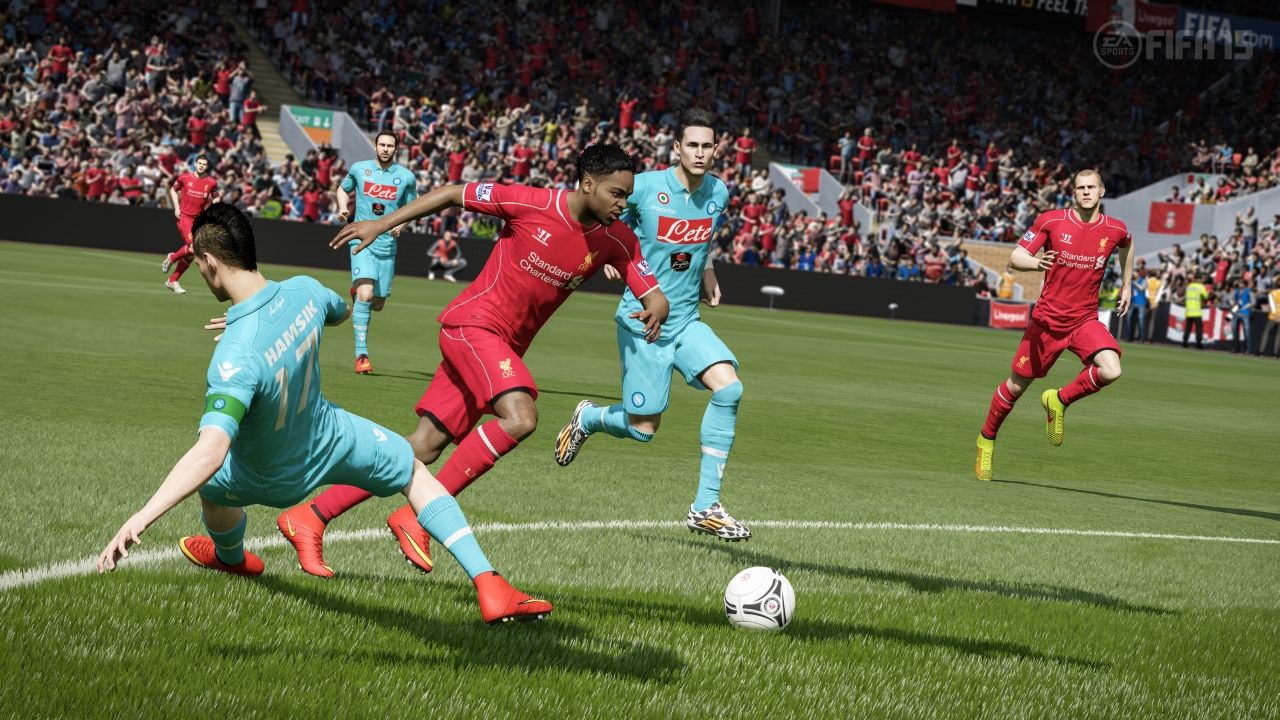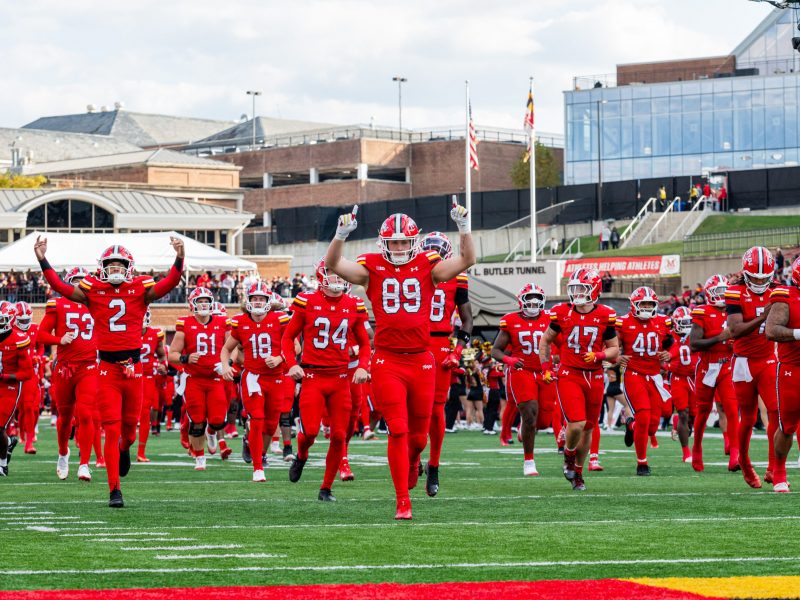
FIFA 15
FIFA 15 is a video game. It’s also the reason your neighbors down the hall are yelling all the time. FIFA is the reason your friend from high school just posted that weird Facebook status (“I just lost to Nick 5-0. I am a loser and always will be.”) and the reason you could probably find someone on the campus able to name three players on Club Atlético de Madrid without too much difficulty. It’s the reason GameStop was so crowded on Tuesday. And, most importantly, FIFA is the reason the U.S. is falling in love with professional soccer.
The latest edition of Electronic Arts’ soccer series, which debuted in 1993, was released in the states Tuesday to much fanfare. Fans lined up outside the College Park GameStop at midnight to buy a game that can’t be beat — there is no final foe or last level. They were simply there to see what improvements were made from last year’s version. And I doubt they were disappointed. FIFA 15 is another nearly flawless installment in the game’s history, a perfect mix of pleasing graphics and smooth controls. The career mode seems even deeper than last year’s, and none of the team rosters are egregiously misrepresented. New features include more player emotion and intensity, authentic Barclays Premier League stadiums and even goal-line technology. For fans of FIFA’s past, 15 is undoubtedly a worthy investment.
Those fans might be growing in number this year, especially in the U.S. Thanks in part to the huge success of this year’s World Cup, soccer is gaining popularity among American sports fans. “After the World Cup, soccer is definitely on the rise; it’s exciting,” freshman kinesiology major Nick Pulli said. (His go-to FIFA team: Brazil).
“I watched the whole World Cup,” said sophomore computer engineering major Brunel Fangmo Fangmo (Borussia Dortmund). “And, mostly because of FIFA, I knew a lot of players.”
Fangmo Fangmo wasn’t alone. the U.S. was the second-largest market for tickets to last summer’s World Cup, a steep increase from the 2010 tournament in South Africa at which the U.S. did not even crack the top ten, according to CNNMoney. Also, the World Cup final between Germany and Argentina was the most-watched soccer game in U.S. television history, with 26.5 million viewers. The tournament was filled with international superstars such as Lionel Messi, Cristiano Ronaldo and Wayne Rooney, who are perennial FIFA favorites.
Those positive viewing trends don’t just apply to international play, either. In October 2012, NBC struck a three-year contract with the Barclays Premier League, England’s top league and arguably the most popular in the world, worth $250 million — a yearly sum more than three times the $23 million per year Fox had promised the league in its previous deal. Now, instead of a few chosen games being broadcast, Americans have access to every BPL game every week.
This country’s own league, the MLS, is a new source of excitement for soccer fans. Two teams — New York City Football Club and the Orlando Pirates — are joining next season and, slowly but surely, international stars are making their way to the league. Sure, players such as Kaka, David Villa and Frank Lampard are all at the tail end of their careers, but their names still carry weight, and they can still play soccer at a high level. The league, in an attempt to cement its new, exciting image and move away from a time when it was seen as a punchline in the U.S., even unveiled a new logo last week.
These exciting developments for the sport may also be attributed to changes beyond the television set, which take place at a grassroots level.
“People didn’t used to play soccer here as kids as much as other countries, but that’s starting to change,” said freshman computer engineering major Alex Johny (Arsenal). “There are more little soccer leagues starting to pop up.”
But why has FIFA been so popular over the years, especially, it seems, among college students, when soccer only recently took off as a viewing sport in the U.S.? One possible reason is the difference between watching the sport versus playing the game. Whereas watching soccer can be seen as boring because of how rarely a goal is scored, that’s a good thing when gamers are controlling the teams. “You can have a bunch of people over and you score a goal and the whole room goes nuts,” said Pulli.
The other reason the video game will always be more popular here than actually watching soccer is obvious: the people. “You can play with your friends for hours on end and it gets really competitive,” Johny said. “Most people that aren’t really into watching soccer can still play FIFA with their friends, and it helps grow their love for the sport.”
FIFA 14 was the third-best selling video game of 2013, with more than 8 million purchases. FIFA 13 was fifth in 2012. The year never really matters, though. Nobody asks their friends if they want to play FIFA 11 or FIFA 13. It is simply FIFA. It’s not an experience defined by new numbers or developments, but by what happens after kickoff. It’s about the disturbed neighbors, the broken controllers and the shameful Facebook statuses. The first part of the name is all that is needed in a request. FIFA. Everything else is implied.
There is no denying that soccer is making its way into a new era in the U.S. In the fall of 2014, shortly after the release of another FIFA hit, the sport presses on to its bright future, one filled with dollar signs and American minds, propelled forward in part by a game, an experience, that is timeless.



